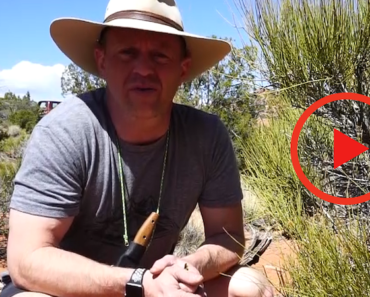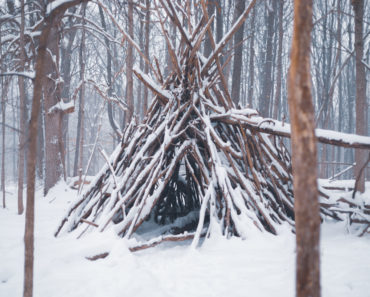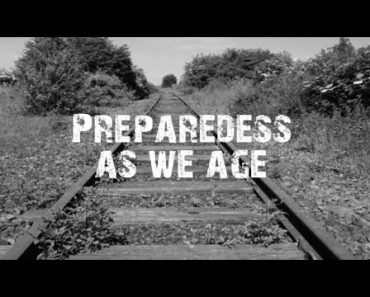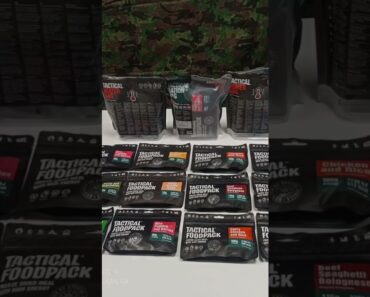The start of any new year is always met with a combination of hope and trepidation. We all naturally wonder what the new year is going to bring. But this year is different. That’s because, with some of the recent pronouncements made over COVID by politicians and pundits, it’s already shaping up to be a 2020 part 3…
Personally, I prefer to enter into the new year with a more positive attitude. Oh, we may still have some of the problems of last year hanging around; but problems are a fact of life. They didn’t start in 2020 and they won’t go away because we hang up a new calendar.
However, the fact we’ve gone through a couple of “touchier” years does affect how we enter this one and the things we should do to start it out. We need to ensure the last two years haven’t had a negative effect on us and extract what lessons we can to develop as survivalists and improve our preps. That way, we’ll be ready for next time.
I think one major lesson we can take from what’s happened is that major disasters don’t always look how we expect them to. We’ve allowed Hollywood to impact our perception with the idea that all disasters hit like a ton of bricks. However, while some disasters do come hard and fast, like earthquakes and tornadoes, there are others that can sneak up on us. We shouldn’t ignore those, just because they don’t announce their arrival.

There’s no question the COVID-19 pandemic was a disaster. Regardless of your view on the pandemic, it has had a major impact on society. Over five million people have died worldwide. People have lost their jobs, their businesses and their life’s investment. Others have lost their lives. Still others have lost their direction. The world’s economy is reeling, with shortages everywhere and high inflation sucking away the value of the dollar. It has also caused even more political division than ever before. And while many states have lifted restrictions the rapidly mutating virus seems to be here to stay.
Take Stock
As each new year begins, I like to take stock of my life; how I am, in a variety of ways, vs. how I was a year ago. This year that’s going to be about how the last two years have affected me, as so much has happened, not only through the pandemic, but in my personal life.
One of my life goals is to improve every year. There’s actually a lot to that simple statement, as there are several different areas I am referring to. Some which relate to prepping and some which don’t. Probably the most important of them is who I am as a person and how I treat others. If I am not becoming more like Jesus Christ, then I’m doing something wrong.
This time of reflection is something we all need to do, looking at how the last two years have affected us on a personal basis. Are we more prepared or less prepared to face another disaster, than we were two years ago? How is the current economic situation, with high inflation and shortages going to affect our preparedness? What can we do in this new year, to improve our personal situation?
Take Inventory
With all the shortages in stores over the last couple of years, I wouldn’t be surprised if you ended up having to dig into your stockpile. After all, that’s why we create stockpiles in the first place. So we’ll have food and other critical supplies in an emergency.
I learned long ago there are times my family will dip into the stockpile. For instance, if there’s something missing in the pantry. That’s not a problem if these items get replaced. But counting on my teenage kids to make a record of everything they take is an unrealistic expectation. Even I don’t always remember to do that. So, I started to take an annual inventory of my stockpile, making sure I had what I thought I had, as well as making sure I knew where everything was.
My inventory goes into a massive spreadsheet where I list the items, how many of them I have, how big they are and where they’re stored. As much as possible, I also like to spread things out, so that all my rice isn’t in the same place for example. That way, if something happens to one part of my stockpile I still have some of that item stored elsewhere. Besides, as your stockpile grows, over time, it becomes harder to keep all units of a single item in one place. In short, it’s easier to spread out. Even so, this requires you to have a way of keeping track, like my spreadsheet.
Another thing taking inventory gives you is the opportunity to check the condition of your food and other stockpiled items. Since, while the methods we use for storing food are intended to keep that food usable for 20 years or more, things happen. Even canned goods, that supposedly last nearly forever, can go bad. I’ve had a grand total of three cans of canned food go bad through the years. Not many. But, as the decaying goo oozed from the cans, it also damaged a few other cans as well.
So, what makes a can of food go bad? Generally, it’s an undetected mistake that occurs in the canning process. We all know to check cans, verifying they haven’t lost their vacuum, for example, but there’s also no way of checking the interior of the can. If the lining of the can becomes scratched during the canning process, for instance, the acid from the food will have an avenue to attack the metal and will eventually eat through it. While not a common problem, as I said, since it only happened to me three times, it’s still one to beware of.
Don’t just check the condition of your food as you are taking inventory either. Check everything. For example I’ve had toilet paper destroyed because of an undetected leak in the roof. It doesn’t take much water to do it either.
Then there are those moments we should rotate our stock. For example, I keep gasoline and January is one of those times when I replace my stock, after burning the stored-up gas in my cars. But I also try to rotate stock on other fuels, like lamp oil. As, even though they last considerably longer, they’re in plastic bottles so they don’t last forever.
I’ve also found that foods “canned” in plastic jars don’t last forever. Apple sauce in particular is packaged in plastic jars. I must therefore replace my stock of apple sauce annually. Mostly because of discoloration. Which, since it’s an early indicator of trouble, means I haven’t ever waited long enough to see it go truly bad.
Another item that needs to be replaced annually is cured meats. I don’t know how many people keep summer sausage in their prepping stock, but it’s a convenient way of keeping meat. I’ve also found that the curing process for making that sausage doesn’t stop when it is packaged. If kept for too long, the meat continues to break down, affecting its texture. While I haven’t had any go bad, per se, it has therefore become unappetizing.
Create Some Goals
I’m not a believer in New Year’s resolutions, mostly because I’m tired of seeing people make them and break them. I thereby can’t see any reason to join that mistaken tradition. So, I usually just say “My New Year’s resolution this year is not to make any New Year’s resolutions.” I know that’s a contradiction but it’s intended as a joke more than anything.
What I do believe in is making goals for my life. That’s not limited to just prepping of course, but some of my goals are always particular to prepping. I rarely complete them all but I end up getting more done by having those goals than I would if I didn’t.
One thing I’ve learned about goals is you should write them down and put them somewhere you’ll see them on a regular basis. That way, you can remind yourself of them. It’s easy to remember the goals you’re actively working on; but it’s just as easy to forget those you haven’t started. Having that list where you can see it will help keep you from forgetting them.
There are four basic areas of prepping and survival that I try to have goals for:
Stockpiling
I’m always working on improving my stockpile. Back when I started, I pushed to get a three-month stockpile of food built up. Since then, I’ve tried to add one month’s worth of food every year. However I also like to pick out a new area to work on each year. Like medical supplies or building materials. That way, I’m improving my stockpile in multiple ways.
Skills & Knowledge
No matter what we know there’s always more to learn. I’ve been on a lifetime journey of learning and it hasn’t ended yet. Each year, I pick out a new area or two I’m going to study that year. Not all of those are prepping and survival related, but I try to ensure at least one of them is. This includes learning ancient trades, like blacksmithing and the old ways of doing carpentry, before we had power tools and nails.
Planning
I’ve found that planning is something that never really ends. We can think our plans are complete but then something comes along to show us an error in our ways. That might be a problem with executing our bug out plan, for example, or finding out our intended source for some natural resource is no longer available. The potential list is long.
One of the things I do is an after-action review of all the information I can find about any disasters that happen. Whether it is the February freeze of 2021 or the fire that leveled Paradise, California. Here, I look for lessons I can apply to my own life. In many cases, what I learn from those reviews causes me to make some changes to my own survival plans.
Projects
There are always projects we can do as preppers. But each year I pick out just a few major projects I want to accomplish, along with smaller projects that oftentimes get added in. This helps to keep things manageable.
A few years ago, I had some major life changes which caused me to lose my home, amongst other things. That also meant losing everything I had done to that home, to make it a better survival shelter and have a more self-sufficient life. After that, I lived in an apartment for a few years. Then my wife and I purchased a home in a small town last year. So, in a way, I’m starting all over on a lot of projects I’ve done before. The advantage this time is that, since I’ve done them before, I can apply what I learned the last time around.
Check Your Attitude
Finally, this is a good time to check your survival attitude. The last couple of years have been difficult in several different ways. One of those is that many people are just plain tired of problems. While that is understandable, there’s the danger of that leading to complacency.
A positive attitude is essential for survival; every military manual on survival stresses that in the first chapter. But it is also essential for prepping in general. We must be eternal optimists, while looking at the world through a pessimistic lens. That may sound contradictory but it isn’t if you break it down. On the pessimistic side, we’re the ones who are always looking at how a situation can turn into a crisis. Most people would call that pessimistic. But we don’t stop there because our goal is to overcome that crisis. So, we look at the potential crisis as an opportunity to better ourselves and become ready to face it if it manifests.
Regardless of what else happens, don’t allow your attitude to falter. You still need to be ready to face whatever comes and do what you must to prepare for it. Remember, it’s not just you. The most important people in your life depend on your being prepared.



























